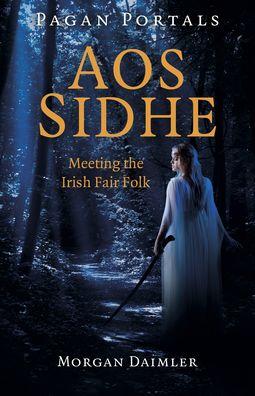At just 85 pages, this little book on the wee people is concise and informative. Author Morgan Daimler set out to separate historical Irish folklore from Victorian and modern whimsy and ends up doing a very good job of researching the origins of tales and first encounters of various types of fairies in the written word. Daimler even distinguishes common misconceptions of the Fair Folk that were imported from English and Scottish fairy folklore. This book introduces the various kinds of fairies found in Ireland and compares with some of the other well-known fairy traditions in order to point out where they differ.
The Irish Aos Sidhe are ambiguous at best in their interactions with humans. Much of the tradition talks of the Aos Sidhe kidnapping humans, whether it’s to play music or in exchange for a changeling. For this reason, one chapter is devoted to safe dealings. The author provides an extensive list of alternate Irish names and their meanings. Their many euphemistic names are designed to avoid offense. The book discusses some of the folklore and beliefs about what may happen when humans find themselves in the company of the Good Folk and how best to respond.
The end of the book has the author’s own pronunciation guide to the many names used in Ireland for Them. I wish I had noticed this early on because Irish words are not written phonetically. The commitment to using the native names along with their English translations is commendable and will challenge readers. This serves to further establish the distinction of the Irish fairy folklore from that of other countries and the recent era.
Since Daimler is drawing a line between ideas less than a 150-years old and the older traditions, they reflects on such ideas as whether They are invisible because They are incorporeal as many modern people see it or if older folklore proves They must inhabit bodies. The topic of whether the Aos Sidhe are human ancestors, ancient gods or other ortherworldly beings is also given fair consideration. I appreciate that the author knows that the modern view of them is popular and yet is still willing to stand by the value of knowing the older folklore which is at times less likeable. For instance, a few historic accounts of abuse in situations where people believed someone to be a changeling warrant a warning. Daimler’s sense of the value of the truth, in terms of accurately describing what people believed in certain time periods, pleasant or not, really comes through.
The book is a basic primer backed by research and written with concern for veracity in the historical context. Those who are only familiar with the modern idea of tiny, winged fairies may have a hard time adjusting their idea to the older viewpoints. Victorian-style fairies may be more popular now but for those who care about verifiable folk beliefs in Ireland, this will get you started and even point you to where to find more historically accurate sources when you’ve finished.
~review by Elsie Smyte
Author: Morgan Daimler
John Hunt, 2022
pp. 85, $10.95
Aos Sidhe: Meeting the Fairy Folk of Ireland (Pagan Portals)

©
2010 - 2025
Facing North
